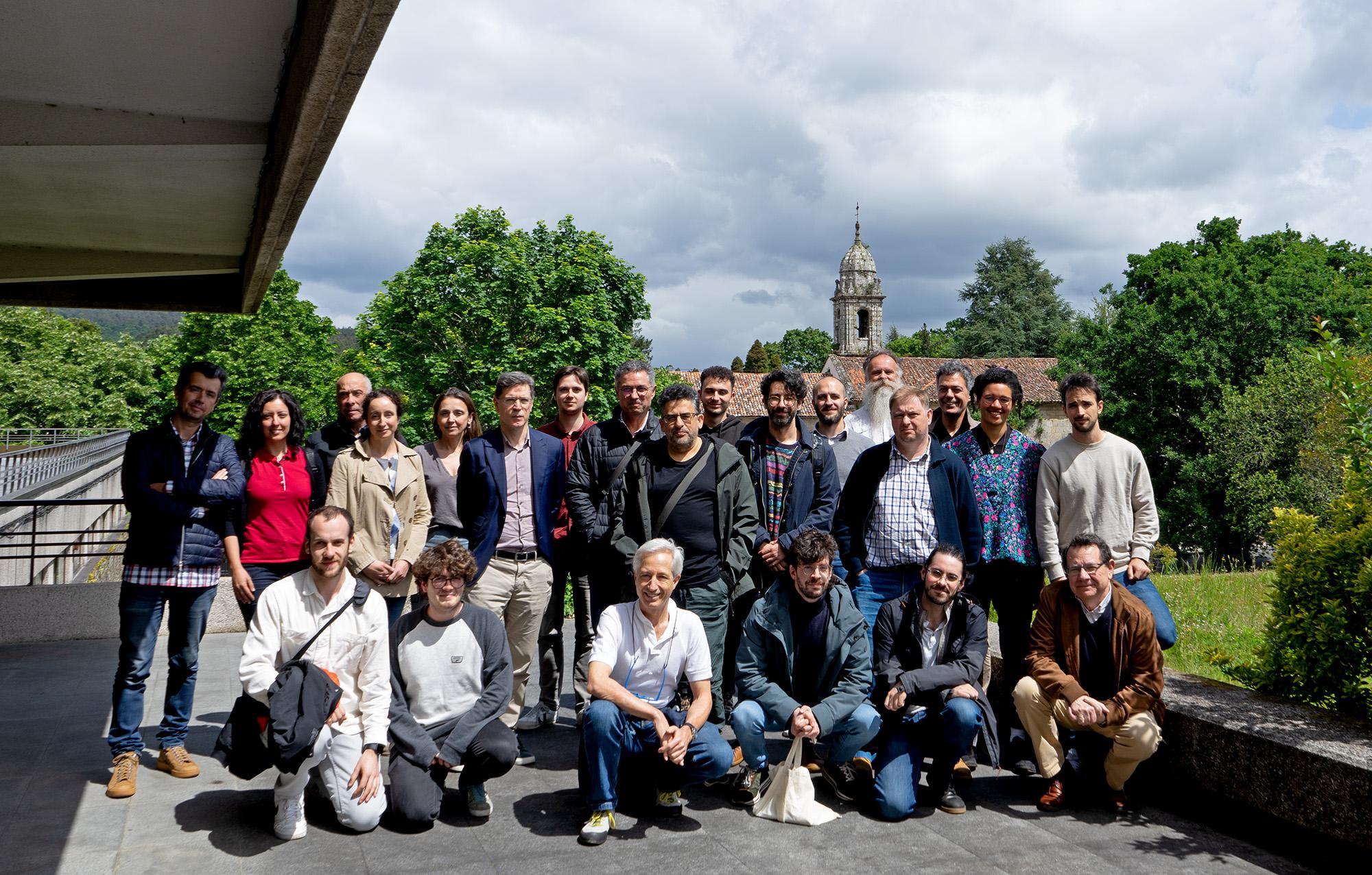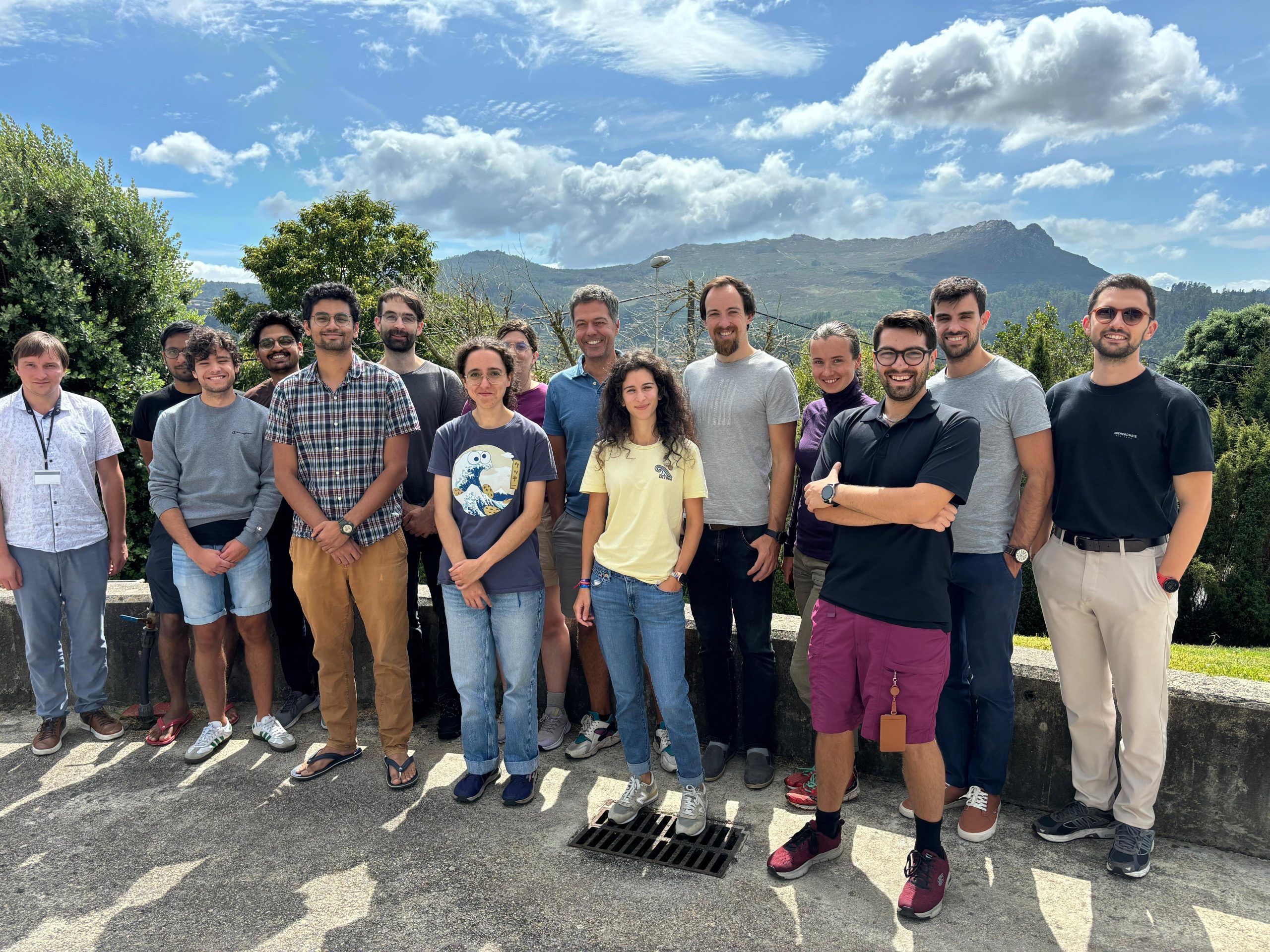VQCC participates in the Galician meeting
of the Complementary Plan in Quantum Communication.

VQCC researchers participated on May 12 in the Galician coordination meeting of the Complementary Plan in Quantum Communication (CPQC) organized at the Galician Institute of High Energy Physics in Santiago de Compostela, together with representatives from CESGA, and the Universities of Santiago de Compostela and A Coruña. This Plan is a state initiative in which collaborates the Spanish Government and six Regional Governments (Galicia, Castilla y León, Basque Country, Catalonia, Madrid and Valencia), which aims to improve the Spanish position in quantum information technologies applied to communications.
Quantum Communications are recognized as a particularly strategic sector within second-generation quantum technologies, which manipulate quantum systems individually. This is attested by the several programs dedicated to these technologies in many countries, from the United States to China. In Europe, quantum communications is the only area that has two framework programmes (FPAs) within the Quantum Flagship and, in addition, a single 10-year infrastructure programme with the aim of creating a pan-European quantum network (EuroQCI).
The CPQC follows the main lines of these initiatives, which contribute to its scientific-technological objectives as well as to the creation of talent and an industrial ecosystem.
The program includes five main lines:
- EuroQCI-Towards a European Quantum Communications Infrastructure. This line is given by developments and deployments that can increase the TRL of these technologies in a shorter term and that meet the first objectives defined in the European programs: the creation of a high security communications network, resistant to any computational attack, either by classical or quantum means.
- Quantum Communications Hardware. This line focuses on hardware developments for quantum communications, first for fiber-based systems –considering technologies that can facilitate their network integration and industrialization (Continuous Variables) and those that offer better secret key rates for longer distances (Discrete Variables)—and, then, for free space systems. The latter includes satellites, which anticipate the space segment that will be needed in the EuroQCI for very long-distance communications in the short/medium term, as well as communications with unmanned aerial vehicles. Likewise, within this line, technology based on entanglement will be developed, including quantum repeaters for quantum communications over long distances (>300 km) over optical fibers.
- Software in Quantum Communications. This line focuses on systems and new protocols with advantages in their security, distance and functionality, as well as security studies of experimental systems and their integration into networks.
- Quantum processing hardware. Quantum communications not only produce secure systems, their ultimate goal is the ability to create quantum correlations between any two network users. This can be employed for ultra-precise distribution of time signals, quantum sensors, and distributed quantum computing, inter alia. These quantum processing technologies, which have a lower TRL but must be developed to obtain the full benefits of a future quantum internet, are the main subject of lines (4) and (5). Specifically, line (4) addresses the hardware to enable these new applications.
- Quantum Processing Software. This line focuses on the required software (SW) for quantum processing technologies.















